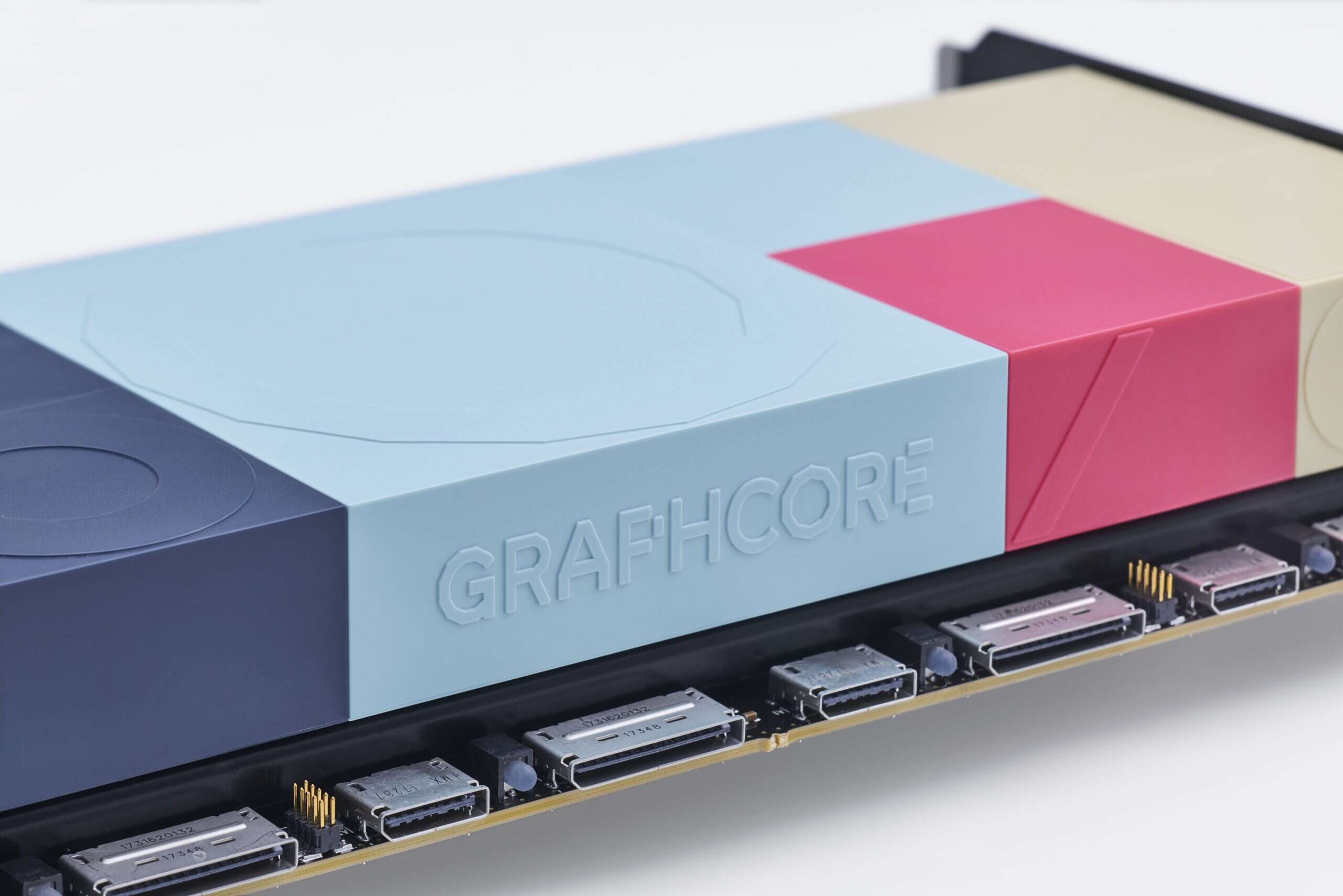
Graphcore CEO Nigel Toon is confident the AI chip designer can grow as an independent business and says the company is ultimately targeting a public listing as it aims to take on the big players in the market and play a part in bolstering Europe’s digital sovereignty.

Toon, who co-founded Graphcore in 2016 and has helped it grow to a valuation of $2.8bn, has no intention of seeing his company fall into foreign ownership, a fate which has befallen many British technology companies including the country’s leading chip designer, Arm. Instead, he has long-term designs on an IPO: “Our investors are some of the world’s biggest technology investors, these are not people who are trading in and out, they believe in [our] story,” he told Tech Monitor. “They’re investing for the long term and ultimately they’ve invested in us as a private company because they see the possibility for us to become public, long term and independent. That’s our goal.”
What is Graphcore? IPUs can power the next generation of AI
Based in Bristol, Graphcore is developing chips, which it dubs intelligent processing units (IPUs), specifically designed for AI and machine learning workloads. In December the company completed a Series E funding round worth $222m, and its backers include one of the world’s best known tech VC funds, Sequoia Capital, as well as Microsoft.
Toon himself has enjoyed a long career in semi-conductors, and he and Graphcore co-founder Simon Knowles were part of the team that launched Icera, a mobile chip developer that was sold to NVIDIA in 2011. Now Toon and Knowles see NVIDIA as their main competition; the US company has grown rapidly in recent years from its original core gaming market and its graphical processing units (GPUs) are widely used to run AI workloads in data centres. “Nvidia is really the key player here today,” Toon says. “The completeness and efficiency of our software has improved dramatically over the last few years, but we’re having to play catch up. That’s why we’ve raised so much money and why we’re hiring so many people, to do what is an incredibly complex job.”
Graphcore launched its first IPU in 2018, and its most recent product, the GC200, was revealed last summer. The 7nm features 59.4bn transistors, and the company says this makes it the world’s most complex AI chip (NVIDIA’s top A100 GPU features 54bn transistors). The next generations of IPU are likely to deliver an exponential performance bump, as Graphcore is one of the first companies, alongside industry big names such as Qualcomm and NVIDIA, to be selected to use 3nm processing technology being developed by TSMC, the world’s leading manufacturer of semiconductors. This will allow it to pack in even more transistors. “We’re on the same level as the very biggest TSMC clients even though we’re quite small” says Toon. “They see the potential, I think.”
With operations already launched in China and Japan, Graphcore is thinking big, even if its income is currently modest compared to the likes of NVIDIA. The company’s most recent accounts, for the year to December 2019, show a £95m loss on revenue of just over £10m.
Graphcore CEO on semiconductors and Europe’s digital sovereignty
Geopolitical tensions in the semiconductor space have increased in recent months, with the ongoing global chip shortage highlighting the world’s reliance on a small group of manufacturers based in the Far East. New US president Joe Biden has pledged to grow US chip R&D and manufacturing capabilities, while China also has big plans to develop its own semiconductor prowess because of restrictions on Chinese companies which have been put in place by the US and its allies.
Europe has been left playing catch-up, with Arm, owned by Japanese firm SoftBank since 2016, set to fall into US hands if its proposed $40bn take-over by NVIDIA goes through. Graphcore uses Arm designs in its chips, but Toon says the NVIDIA deal risks the company’s neutrality. “NVIDIA buys [Arm] and they’re no longer neutral,” he says, adding that businesses may be fearful of dealing with Arm if they see it as a supplier and a competitor.
Moreover, Toon says, companies like Arm and Graphcore must remain independent to ensure Europe retains its tech sovereignty. He points out that Dutch firm ASML is one of the few global producers of the complex machinery required to make semiconductors. “Europe has these really strong technology enablers in the semiconductor industry and what’s becoming obvious is how important this industry is in terms of powering everything that we use around us,” he says. “If Europe loses these core technology companies we lose a voice, we lose digital sovereignty, we lose the ability to be part of the conversation”.
That said, Toon believes putting up barriers between regions is counterproductive. “As you get to the higher levels of the software, that’s where it’s really important that you support all open standards,” he says. “All these different technologies build out the ability of the core processor to perform and be useful.” He says it would be “naive” to think you can cut put up boundaries and “say that Europe can be independent or the US or China can be independent, that just wouldn’t work.” He explains: “If you did try and do that it would push everybody back in terms of technological development.”
AI’s role in the next generation of scientific discoveries
Graphcore’s revenue is likely to be driven by success in the data centre, but AI has the potential to transform many areas, including science and medicine. Graphcore is working with CERN at the University of Bristol to help explore some of the experiments conducted at the Large Hadron Collider, helping to better understand the results and direct future experiments. “The most exciting thing is helping these researchers come up with the next breakthroughs,” Toon says. “We provide the tools, and by making these tools available to innovators, they can make important breakthroughs. That’s the exciting piece”.
Homepage image Graphcore C2 IPU accelerator card courtesy Graphcore






